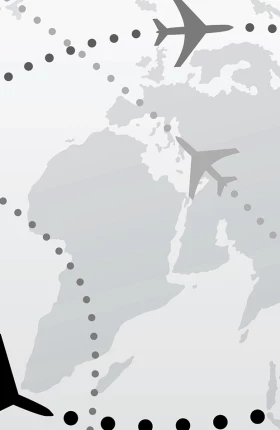This commentary was first published by Infrastructure Journal.
They may seem to be polar opposites, but the wired world of the Internet and the concrete and steel world of infrastructure are closely related. If business and political leaders hope to transform the fortunes of their companies and countries, they will need both bits and bricks—and they will need them to be more connected.
As the World Economic Forum noted in a recent report, virtually every major city today is plagued by congestion. In central London, the average speed of vehicles is about 8.7 miles per hour. In Moscow, traffic crawls along at about 3.7 mph. On the roads to São Paulo, Brazil’s capital, traffic jams have been known to stretch more than 100 miles. And everybody everywhere is frustrated by air travel delays.
But things are starting to change as the digital world of the Internet and the physical world of infrastructure converge. Digital technologies are increasingly being embedded in everyday objects, from refrigerators to roads and buildings. And as this happens, the efficiency of everything from traffic flows to energy use will improve.
By 2025, some 90 percent of all new cars sold worldwide will be able to communicate not only with other cars but also with infrastructure, according to “2025 Every Car Connected: Forecasting the Growth and Opportunity,” a recent white paper published jointly by GSMA, the mobile-phone industry’s international trade association, and research firm SBD. Similar changes will take place in other industries as well, dramatically transforming the world. Smartphones, in effect, will give way to smart homes, smart businesses, and smart cities.
This massive reshaping of the digital and physical worlds represents an unparalleled opportunity for companies and governments to accelerate economic growth, increase productivity, reduce pollution, and improve health and education. Yet they can only take advantage of the amazing possibilities of the digital world when they have made the necessary investments in infrastructure: highways, ports, railroads, airports, water systems, power grids, and telecommunications.
Over the next two decades, according to our estimates, some $40 trillion will be required to update, rebuild, and expand aging infrastructure assets in the U.S. and other developed countries while building out infrastructure in Africa, Asia, and Latin America.
The cost of financing needed projects in Africa alone will amount to some $48 billion per year in additional infrastructure funding, the World Bank has said. We estimate the global funding gap to stand at $1 trillion to $1.5 trillion annually.
These shortfalls can have immediate and crippling effects, such as power shortages—which are a chronic feature of daily life in many Asian, Latin American, and African countries—and congestion at ports, airports, and on roadways. In Africa, for example, some 40 percent of food produced spoils on the way to market.
The shortfalls can also have a major impact on economic growth. China and India, for example, have both experienced significantly better-than-average economic growth rates in recent years. China, however, averaged 9.2 percent from 2010 through 2012, while India averaged 7.8 percent—15 percent less.
Many reasons account for these differences in growth rates, but infrastructure is one of the most significant. China has some 500 commercial airports; India about 350. The capacity of China’s electric grid is approximately 5 trillion kilowatt hours of electricity; India’s less than a billion kwh. China has thousands of miles of modern high-speed expressways; India’s roads are clogged with congestion. These differences help explain why manufacturing accounts for more than 45 percent of China’s GDP, but only 18 percent of India’s.
The companies and governments that embrace and invest in this new world of bits and bricks can change the game and transform their fortunes, even in times of austerity. Yes, the money problems are daunting—but they are not insurmountable. Though governments may be wallowing in red ink and mounting debt, private-sector capital is abundant. As of 2010, insurance companies, pension funds, and sovereign-wealth funds together held assets under management of $45 trillion. Many such institutions are looking for alternative investments, including infrastructure projects.
Today’s fiscal realities make this an opportune time for companies and countries to develop public-private partnerships. Road projects are an obvious choice for such partnerships; airports, ports, railways, water systems, and energy offer additional opportunities.
What lies ahead for all of us is a world of hyperconnectivity, where virtually everything can communicate with everything else. And the building blocks of this world are the Internet and infrastructure. The companies and countries that command both will own the future.





